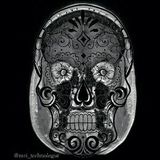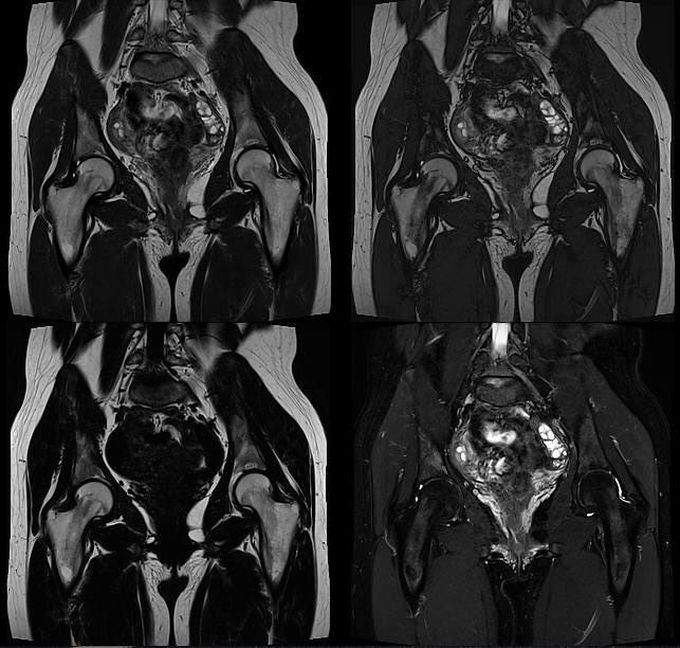


The Dixon technique
The Dixon technique is based on the chemical shift. With this technique two series of images are acquired. In the first series the signal from fat (Sf) and water (Sw) protons are "in-phase" (Sin). In the second series the signal from fat and water protons are "opposed-phase" (Sop). A separate fat and water image can then be calculated from the equation: Sin = Sw + Sf Sop = Sw – Sf Sin + Sop = [(Sw + Sf) + (Sw - Sf)] /2 = (2 Sw) /2 = Sw Sin - Sop = [(Sw + Sf) - (Sw - Sf)] /2 = (2 Sf) /2 = Sf Dixon delivers up to 4 contrasts in one sequence: in-phase, opposed-phase, water and fat images (figure). Fig. T2-W TSE Dixon images. Dixon technique has the ability to deliver up to 4 contrasts in one measurement. In-phase (upper left), opposed-phase (upper right), fat (bottom left) and water (bottom right) images of the pelvis. Image dataset acquired at 3.0 Tesla. Images courtesy of Bac Nguyen.

